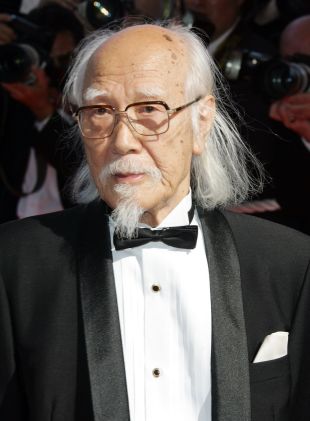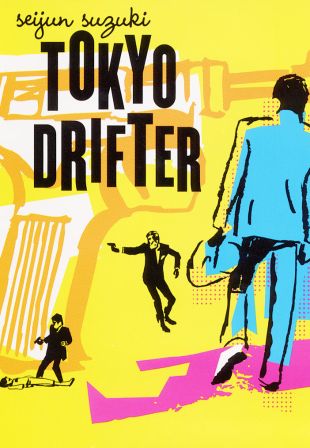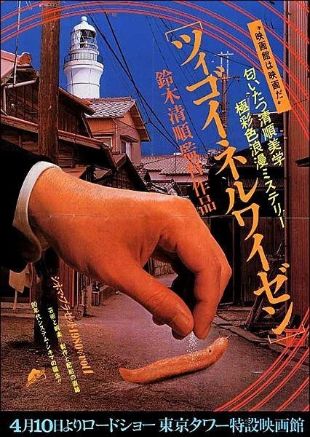Seijun Suzuki's career fell into two distinct parts. From the late 1950s until 1967, he was a director of production-line genre flicks at Nikkatsu studios. While working in this seemingly hostile environment, Suzuki cranked out some of the most bizarre, nihilistic, and brilliant gangster films ever committed to celluloid. During the 1980s, Suzuki reinvented himself as a renowned art film director who received numerous awards and much critical praise. In both incarnations, Suzuki was considered one of the most important and influential voices in Japanese cinema.
Born Seitaro Suzuki in Tokyo on May 24, 1923, he failed the entrance exam for the Ministry of Agriculture's college because of his weakness in science. Instead he attended a small college in northern Akita prefecture until he was called up for military service. He witnessed the war first-hand as a second-class private for the Navy, an experience that he found "comical." Upon returning to Japan, he enrolled in the film department of the Kamakura Academy and passed the entrance exam for Shochiku studios. There he worked as an assistant director under Noboru Nakamura, among others. In 1954, he transferred to Nikkatsu, the most sordid and sensational of Japan's four leading studios.
Nikkatsu's mainstays in the 1960s were either ultra-violent yakuza- (gangster) films or sado-masochistic soft-core sex films called pinku eiga. Suzuki soon proved himself adept at cranking out studio-scripted quickies, and he ultimately churned out some 40 films for Nikkatsu during the fifteen years he worked for them. Such early titles as The Nude and the Gun and High-teen Yakuza already exude the two-fisted flamboyance of his later, more developed works.
With his 1958 film Beauty of the Underworld, he first signed his name "Suzuki Seijun," and in 1963, bored with production-line genre material, he began to assert his own voice in Youth of the Beast. The film opens in black-and-white, then switches to color. A sandstorm appears suddenly, as a junkie prostitute is being whipped. A gay yakuza parks his pink limo beneath matching cherry blossoms. Beginning with this film, Suzuki increasingly emphasized the absurdities of the genre and the artifice of the medium.
Suzuki's extreme style eventually drew criticism from studio executives. In 1966, after repeated commands to tether his flamboyance, Suzuki created Tokyo Drifter in seeming defiance of the studio. The film is the yakuza genre reductio ad absurdum, held together with only the barest attention to logic or narrative coherence. Suzuki's pop-art aesthetics and loopy cinematic devices almost crowd out the plot. Yet miraculously, the film shocks, thrills, and entertains. His 1967 work Branded to Kill proved to be the straw that broke the camel's back. The film was so rococo, so gleefully nihilistic, so utterly bizarre that it prompted enraged studio officials to fire Suzuki. Today, Branded to Kill and Tokyo Drifter are considered Suzuki's masterpieces.
Suzuki was effectively blacklisted from filmmaking until 1977. During those ten years, the Japanese film industry began to decline and the formerly rigid studio system collapsed. In 1980, Suzuki, now without the constraints of Nikkatsu, released Zigeunerweisen, the first of his "Taisho Trilogy," a haunting, grotesque film about identity in the 1920s, when Japan first began to adopt Western culture. This film won a prize at the 1981 Berlin Film Festival and was voted the best Japanese film of the 1980s by Japanese critics. After completing Kagero-za and Yumeji, the last two chapters of the "Taisho Trilogy," Suzuki stopped shooting features, although he continued to shoot pieces for television. In 1988, the Edinburgh Film Festival presented the first Western retrospective of Suzuki's films. Suzuki died in 2017, at age 93.



